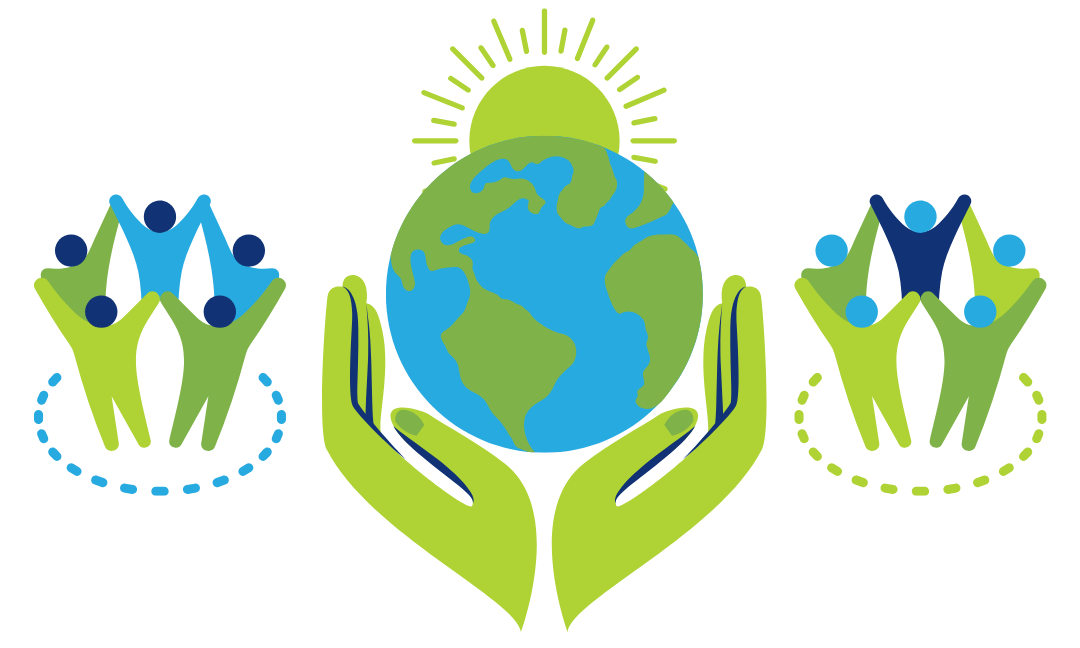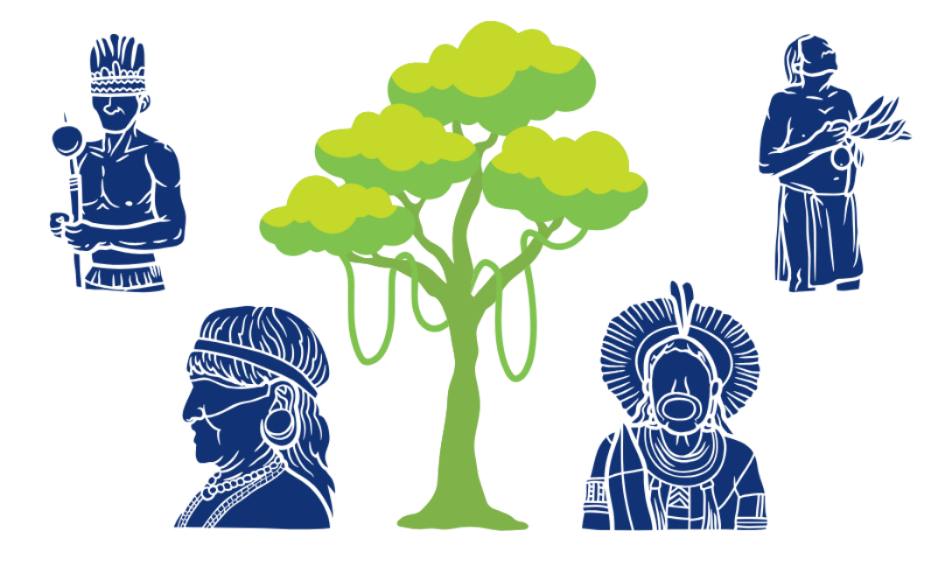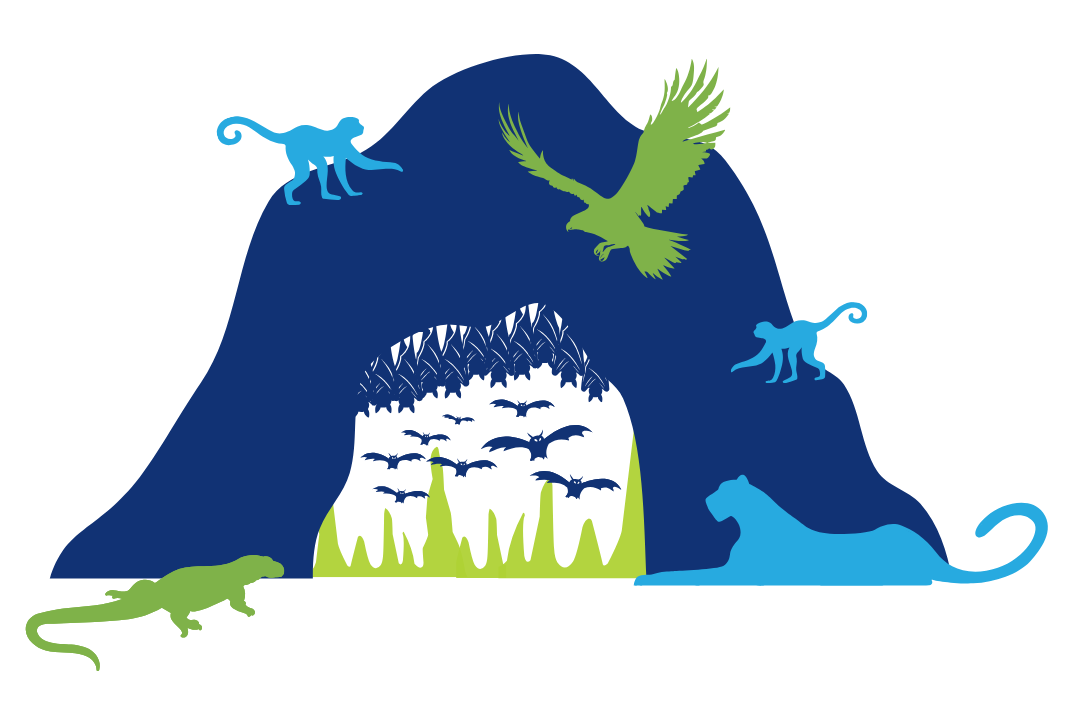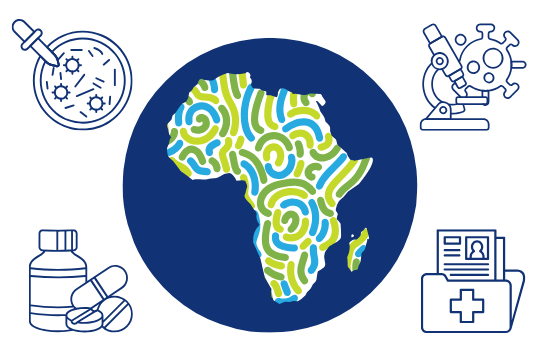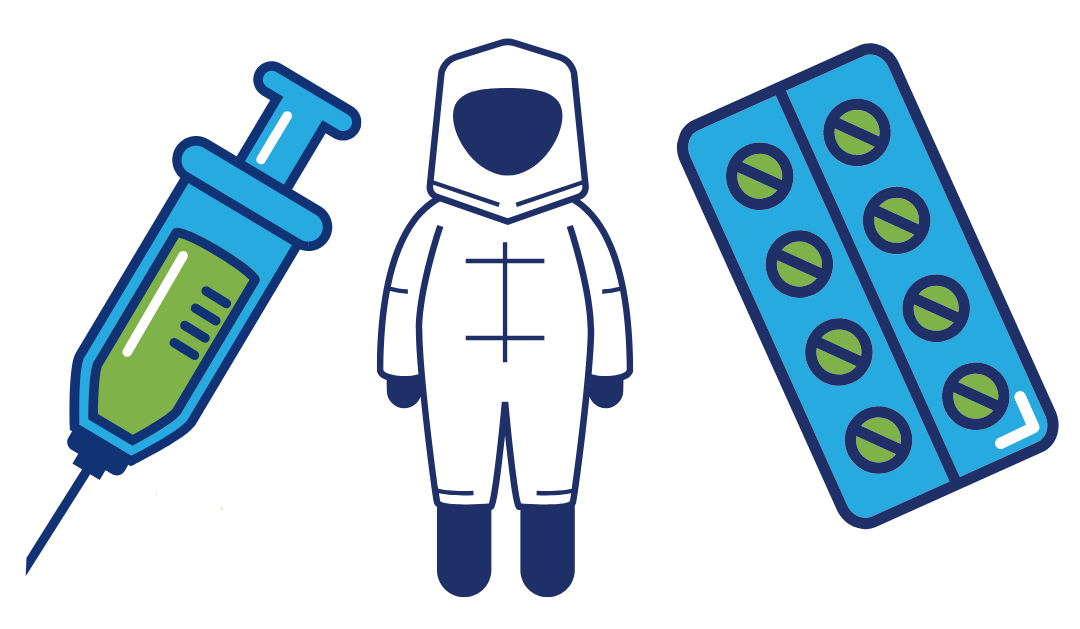
From Ebola outbreaks to the spread of mpox and, of course, COVID, a disease that emerges in one place can threaten people the world over. Governments, nonprofit organizations, and pharmaceutical companies all get involved in detecting and fighting these outbreaks, but there’s another player that flies under the radar.
The US military has to prepare and protect personnel and their families, and they don’t keep their work to themselves. Just outside of Washington DC, Ft. Detrick houses a series of laboratories where military and civilian scientists and technicians work together to predict what the next outbreak might be – and to help defend against it.
At the US Army Medical Research Institute of Infectious Diseases (USAMRIID), researchers do the basic science of developing vaccines, diagnostic tests, and treatments for dangerous germs. In this episode, we visit the labs and speak with Dr. John Dye, deputy director of the Foundational Sciences Directorate at USAMRIID, who tells host Maggie Fox about the threats facing the world, and why the US military is involved in fighting them.
Maggie Fox (0:01)
Hello and Welcome to One World One Health with the latest ideas to improve the health of our planet and its people. I’m Maggie Fox.
Those of us living here on planet Earth face so many challenges, including pollution, climate change, and new and reemerging infectious diseases and they’re all linked. This podcast is brought to you by the One Health Trust with byte-sized insights into ways to help.
In this episode, we’re visiting Dr. John Dye, Deputy Director of the Foundational Sciences Directorate at the US Army Medical Research Institute of Infectious Diseases: USAMRIID for short. They’re based at Fort Detrick in Frederick, Maryland, outside Washington DC. And in the labs here, people work to develop drugs, vaccines and diagnostics for some of the most dangerous pathogens on the planet, such as Ebola, Marburg virus and other hemorrhagic fevers, as well as COVID, and mbox. John, it’s such a pleasure to meet you and to visit all the people working in the labs here.
I want to ask you, first of all, you work not only on pathogens that might be used to attack but also on emerging infectious diseases. What we’re seeing now are not terrorist attacks, but nature attacking us. Why is this happening?
John Dye (1:20)
That’s a great point. So here at USAMRIID mission is to protect the country against bio defense. But what we have seen is a merging of worlds where biodefense and emerging infectious diseases are becoming one, there’s no way to separate the two. And when we look at why it is that in 2014, there was an Ebola outbreak in West Africa, in 2016 and 17, there’s Zika outbreaks. In 2018, there’s another Ebola outbreak in the Democratic Republic of the Congo, and then 2019, 2020 we have COVID.
Why are these continuing to come along? Well, one could argue that it’s because we’re surveying more, and we’re seeing a better picture of what’s out in the world as far as these infectious diseases. But I actually think it’s more due to a couple things. The first thing I think it’s due to is the fact that we’d like globalization, where we have areas of the world like sub regions in Africa, and Europe and other places where you did not have industrialization. And now you have industrialization, and people are moving into those areas, and disturbing the ecosystems of the animals, and the insects that are carrying these viruses and bacteria. So therefore, you have a greater chance of that zoonotic or spillover from an animal into a human, it’s occurring more often because we’re invading those areas. Additionally, on top of that, with climate change, you’re also changing the ecosystem of where those animals travel. So migratory patterns of bats and migratory patterns of birds and other animals have changed due to climate change. So you have more of a chance of that interaction.
The last component is travel. We are now a global country,and a global world where you can get an eight hour flight to anywhere. So you basically can be anywhere in the world and be in London, or New York, or in Tokyo, in a very short amount of time, where, during that time, you may not be showing clinical signs of disease. But when you get there, you start to manifest those. And you’re already in the epicenter of a large city where we can have rapid spread of these pathogens.
Maggie Fox (3:38)
So why does the US military even care about this?
John Dye (3:42)
So we’ve been looking at research in multiple infectious diseases because number one, the bio defense aspects. If a nation chooses to weaponize some of these infectious diseases, we need to be prepared as a country to be able to respond. So having diagnostics, which are tests to be able to determine whether you have an infection or not, for particular bugs, virus and bacteria, and then also having vaccines and therapeutics or treatments to give an individual if they actually get the infection.
So we obviously have to address this because we are asked in the military to send soldiers and soldiers’ families into some remote regions where some of these infections are endemic, or they occur naturally. So if we send them over to these regions, we have to provide them with a treatment to be able to survive and not spread that particular virus if they come back to the United States. So that was our initial mission. And now it’s gone to much, much more with COVID and everything else, where we are actually involved in the day-to-day of global health, in addition to the day-to-day of military health.
Maggie Fox (4:47)
So some of the stuff you are doing here, John at Fort Detrick supports this. You’ve developed some of the vaccines, you’ve developed diagnostic tests, and even some of the treatments.
John Dye (4:59)
Yes, we have, we are very proud of that. And it’s interesting because a lot of the agents that we work with: Ebola, Marburg, monkeypox, a lot of these agents don’t have a commercial value outside unless there’s an outbreak and then everybody wants the vaccine and everybody wants treatment. So a lot of times we partner with companies and academic institutions to take for these products. I’m going to give you a couple examples for monkeypox: there’s an outbreak going on right now across the world in certain populations. Both of the vaccines that are currently being used for monkeypox as well as the tecovirimat, the therapeutic or developed and tested here at USAMRIID and then they were marketed and licensed by companies outside. As another example, for Ebola, the Ebola virus: the VSV vaccine, which is being currently used in the Democratic Republic of the Congo for Ebola infections, and was used in West Africa. The initial VSS vaccine was actually developed here, USAMIIRD, and then Merck licensed it. So there’s a lot of vaccines that we’ve worked on in the past.
Maggie Fox (6:03)
You do the basic work, and then you license it to these companies.
John Dye (6:07)
That is the case. So as far as treatments, the monoclonal antibodies became very popular, and everybody learned about them, for the most part you hadn’t been working on before through COVID, we partnered with AstraZeneca. AstraZeneca, and USAMIIRD together produced a monoclonal antibody cocktail for COVID, called Evusheld. E,V, U S, H, E, L, D. And that antibody cocktail is now being used in emergency use in the United States and it’s approved for use in the European Union for individuals in certain demographics that can’t receive a vaccine.
So there are certain people who because of their immune system, or other reasons are not eligible or not able to receive the vaccine, even though they may want to. So having a treatment option to offer them is really preferable. So that’s that and actually it was noted in 2022, as one of Time magazine’s inventions of the year. So we’re very proud of the work that we’ve done on that. There is a Sudan Ebola virus outbreak that’s occurring in Uganda, both the remdesivir treatment, as well as the monoclonal antibodies were also developed and tested here at USAMIIRD. So a lot of our products that we developed for the military have more global applications as they spread out into the real world.
Maggie Fox (7:24)
Can we talk about how important it is to be out in front of these outbreaks and epidemics? I’m thinking about a lab in Sierra Leone, in Kenema, where scientists were working on Lassa fever, which is caused by a virus spread by rodents. But it was fortuitous that they were there.
John Dye (7:42)
Correct. So in West Africa, Lassa fever, which is another hemorrhagic fever, like Ebola has been in West Africa for decades, probably centuries. And there are laboratories in Sierra Leone and Liberia and Guinea, that focus on Lassa virus, and we’ve been supporting those laboratories and developing vaccines and countermeasures for loss of virus. So when the Ebola virus, which normally occurs in Central Africa, moved to West Africa, they weren’t expecting it. It was not ever known to be in West Africa before. So people were coming in with what we would call flu-like symptoms. And they said, “Well, you probably have the Lassa virus. Here’s ribavirin, go on home”. And then all of a sudden, everybody started dying.
Maggie Fox (8:33)
Ribavirin is an antiviral.
John Dye (8:34)
An antiviral that is used for multiple viruses, like Lassa virus, which has less lethality than Ebola virus, it’s not as lethal once you get it. So they were going home, and then they were dying of Ebola virus. And it wasn’t until it was too late, where it had already spread to so many hundreds of 1000s of people that it became a real problem. But the fact that we had laboratories already in these countries where we were working on Lassa virus, allowed those laboratories to pivot and be flexible enough to be able to treat Ebola virus. So having the infrastructure in those countries allows us to be able to quickly and rapidly adapt as the viral or bacterial insult changes. I always hear how do you know what’s going on? It’s like trying to predict where lightning is going to strike. And then not only like, but what kind of lightning is going to strike? What virus or bacteria should we prepare for? That’s a really hard thing to determine. But these regions have particular agents and infections that predominantly occur in the I can tell you I can’t tell you what village in Uganda there’s going to be a Marburg outbreak, and when it’s going to happen exactly, but I can guarantee you in the next five years, there will be a Marburg outbreak in Uganda, based on the historical literature of how many outbreaks have occurred over time. So what we need to do is we need to be pre positioned to have vaccines and therapeutics in those countries where these occur, so that we are then prepared when those outbreaks occur.
Maggie Fox (10:12)
And being prepared has paid off in other ways too. I think right here in your labs, you’re screening compounds, testing them to see if they work against various pathogens. That’s how remdesivir hit the market so fast for COVID, you’d been testing it already.
John Dye (10:27)
That is correct. So we had been working with Gilead, who has marketed remdesivir for Ebola virus. And we had remdesivir, here at the Institute and we were able to test it against a wide variety of different viruses. So when COVID came around, we were able to test it against that and let Gilead know, hey, yes, remdesivir does work against COVID, it’s worth trying to take this forward. But if you don’t have the infrastructure in the laboratory set up to be able to do that high throughput screening or high content screening, you will never be able to get ahead.
So we can look at drugs that are already on the market and see if we can repurpose them, like remdesivir, or an emerging infectious disease. And we also have the ability to look at new compounds or new drugs that are currently being developed at different places, either here at USAMRIID, or an industry or academia, and determined to do those work. So when these outbreaks occur, we normally get an influx of information and an influx of companies and academic institutions saying: “I think we have this well, I know we have this, I think it might work against this particular virus that’s causing this. Can you help us by testing it?” And that’s what we do. We help test those antivirals and antibacterials. To see if they work, so that then they can take them forward and hopefully have a more global aspect.
Maggie Fox (11:54)
Why do you have to do this? Why can’t the companies do it?
John Dye (11:57)
They can, but they don’t have the facilities. So the agents that we’re looking at require containment, they require working in a BSL three or BSL four environment, which means you have to work in a spacesuit connected to air to provide the safety. So most companies don’t have that capability. They have the ability to test something against flu, or to test something against tetanus. But they don’t have the ability to test against the high containment highly lethal agents that we have here at USAMRIID. So they partner with us to test against those highly lethal agents, when there is a meet.
Our ability to respond to these outbreaks of infectious agents is really amplified by the collaborations that we have with academic institutions, industrial partners, and other government agencies such that it’s a whole approach where everyone is involved. And the only way that we can do that is with those collaborations. We can’t act in a vacuum on our own and we shouldn’t because it’s not good for the world that way. We need to actually leverage what is going on outside of USAMRIID, and then take it to the next level with the work that we do and can take.
Maggie Fox (13:09)
John, thanks so much for taking the time to chat with us.
John Dye (13:12)
Maggie anytime. Please come back.
Maggie Fox (13:16)
Listeners can share this podcast which is brought to you by the One Health Trust by email, LinkedIn or your favorite social media platform. And let us know what else you’d like to hear about at O W O H at one healthtrust.org.
Thanks for listening!
Guest

Dr. John Dye is Deputy Director of Foundational Sciences at the U.S. Army Medical Research Institute of Infectious Diseases (USAMRIID). He coordinates research programs to develop therapeutics and other medical countermeasures against highly pathogenic agents of military importance that are studied in Biosafety Level 3 and 4 containment laboratories. Dr. Dye has influenced basic and applied research on various aspects of virology and immunology, including the identification and publication of Ebola virus, Lassa virus, and Lujo virus receptors in the journals Nature and Science. During the COVID-19 pandemic, his team participated in the initial characterization of convalescent plasma as a therapeutic and assisted AstraZeneca with the development of the FDA-approved monoclonal antibody cocktail EVUSHELD. Dr. Dye has authored over 100 peer-reviewed manuscripts, holds six patents on medical countermeasures, and was the 2016 Geneva Foundation Research Scientist of the Year. In 2022, he was inducted into the Order of Military Medical Merit, a mark of excellence within the Army Medical Department. He earned a Bachelor of Science in Biology from the College of William and Mary in Williamsburg, Virginia, and a Ph.D. in Immunology from Loyola University of Chicago.
Credits
Hosted and written by Maggie Fox
Special guest: John Dye
Produced and edited by Samantha Serrano
Music composed and sound edited by Raquel Krügel
Transcript edited by Harsh Pingle



